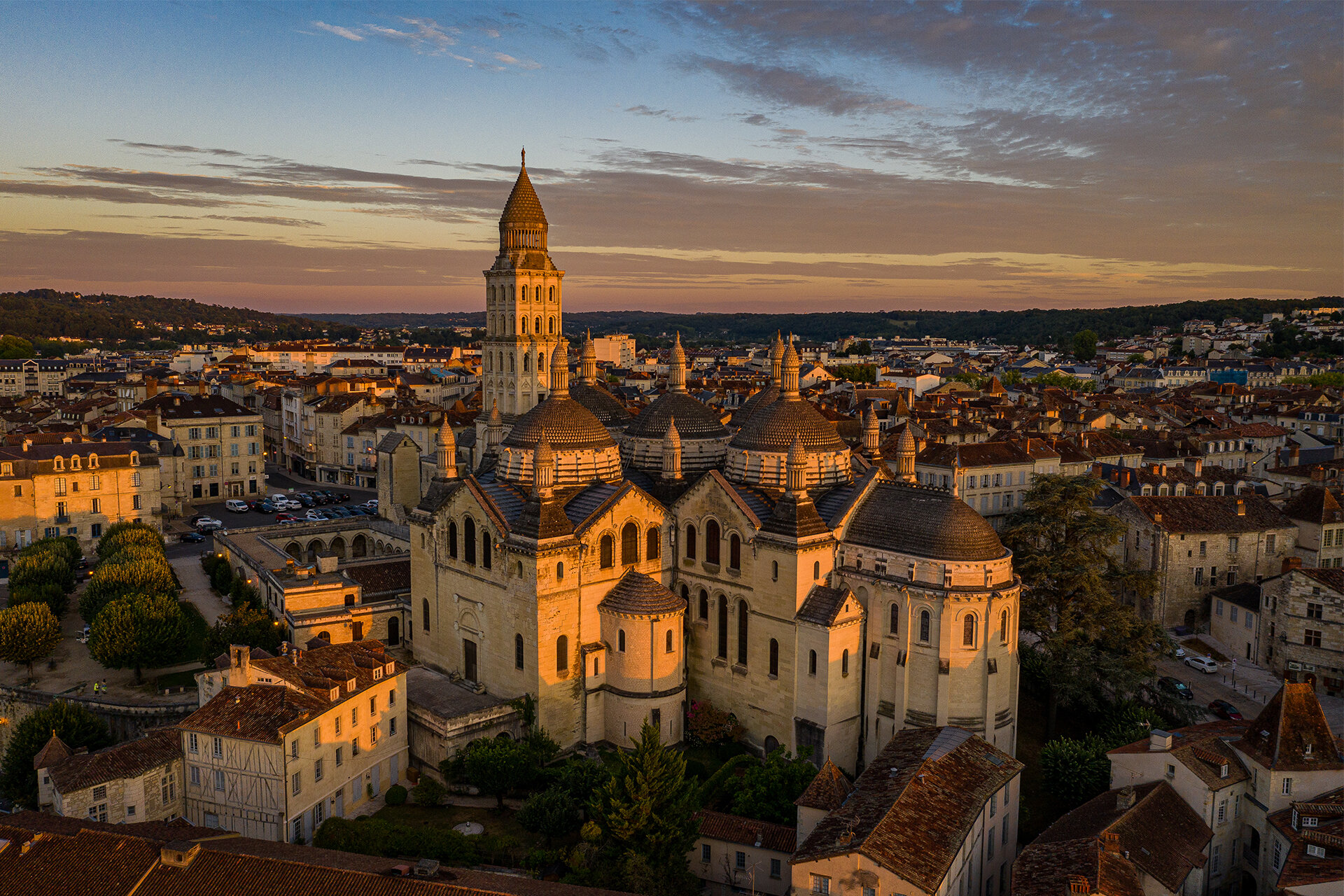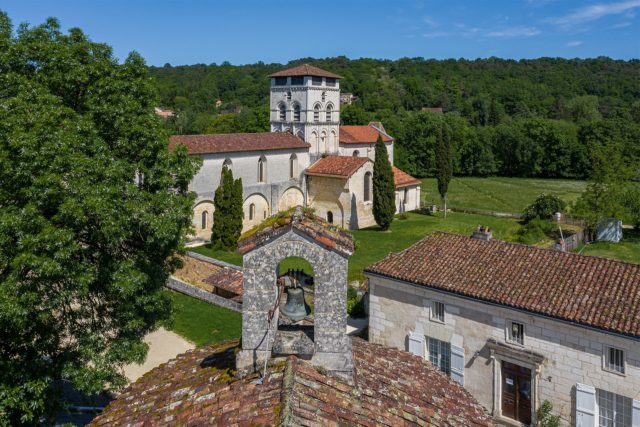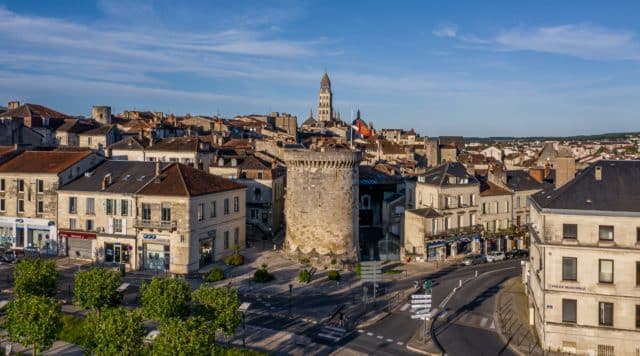In the heart of Périgueux’s historic district, Saint-Front Cathedral stands proud as the jewel in the crown of an architecturally rich town!
5 good reasons to visit Saint-Front Cathedral 😀
1.It is listed as a UNESCO World Heritage Site and is a Romanesque-Byzantine cathedral of considerable interest.
2.It is one of the exceptional buildings on the world renowned pilgrimage route to Santiago de Compostela.
3.It was restored by Paul Abadie in the 19th century, who later used it as a model to build the Sacré Coeur in Montmartre.
4.The organ is not to be missed !
5.Accompanied by knowledgeable guides from the tourist office, you can climb to the top of the cathedral for a spectacular, panoramic rooftop tour of Périgueux.
The undeniable grandeur of Saint-Front Cathedral
Nicknamed “the great mosque of Périgueux” by Victor Hugo, this truly majestic building captures the eye from whatever angle you see it. Perched above the river, it is best viewed from the south bank on the riverside bike and pedestrian path, known as the “voie verte“. It is essentially the amalgamation of two churches : the latin church at the west entrance which was burnt down in 1120, and the Roman-Byzantine church built on a Greek cross plan with five domes which gives St Front a surprisingly oriental air.
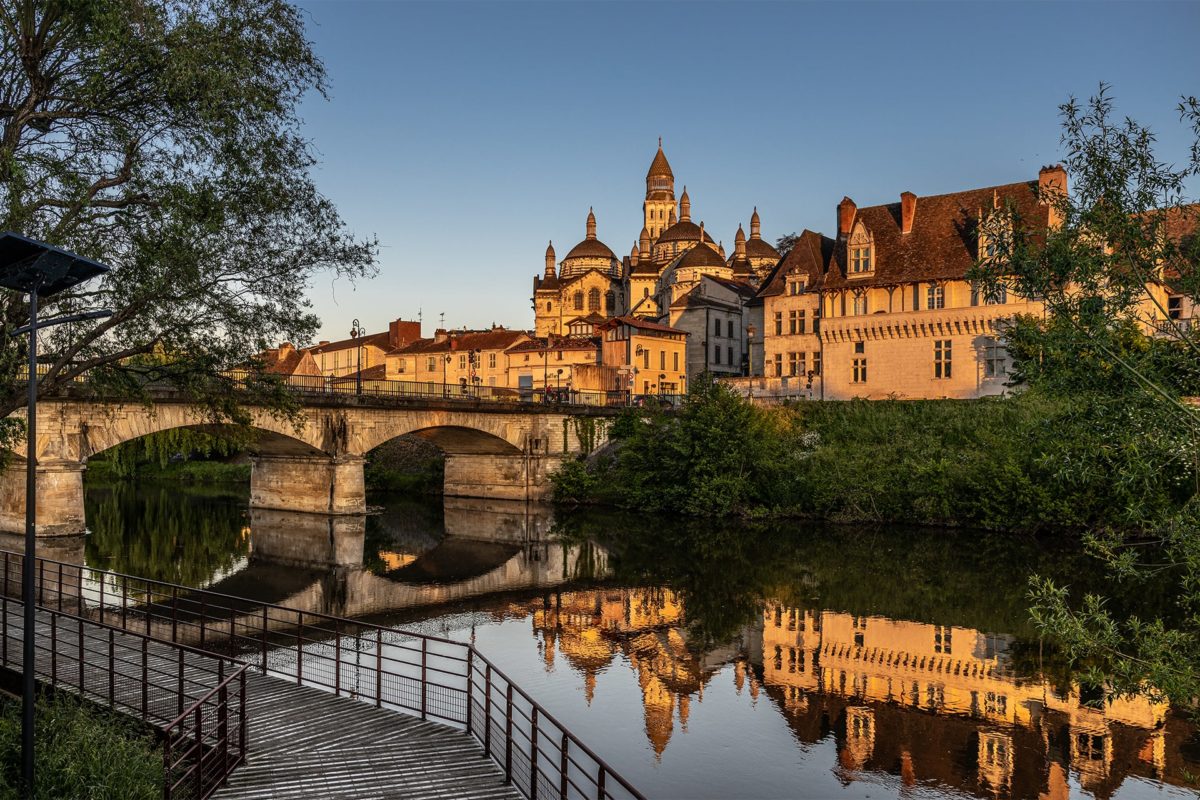
👂 Listen to the chiming of the bells of St Front Cathedral, it’s as if you were there !
👉 You can enter the cathedral from the square known as Place de la Clautre via the façade of the old latin church or from Place de Greffe, to the north of the church. We recommend the second option which gives a better first impression of the interior.
Saint-Front Cathedral, a long and fascinating history
Are you ready to step back in time?
Let’s get the Time Machine fired up !
- Located on the Puy Saint-Front hill in Périgueux, the town’s first church was built around 500-536. Destroyed by the Normans around 845, it was rebuilt as an abbey in 1047.
- During the 11th century, a domed church was built as an extension to the existing one, to accommodate the growing number of pilgrims who came to pray at the tomb of Saint-Front. Unfortunately, in 1120, an accidental fire destroyed the houses around Place de la Clautre, the old church and a large part of the abbey.
- After the fire, pilgrims and worshippers were more easily accommodated in the enlarged new church. The Greek cross floor plan enabled the maximum number of visitors to admire and pray at the relics of Saint Front, the Catholic evangelist and patron saint of Périgord. This was certainly the most lavish period for the church, as the town became a major focus for pilgrims, and merchants profited from this influx of visitors who enriched the town financially and gave it a certain notoriety.
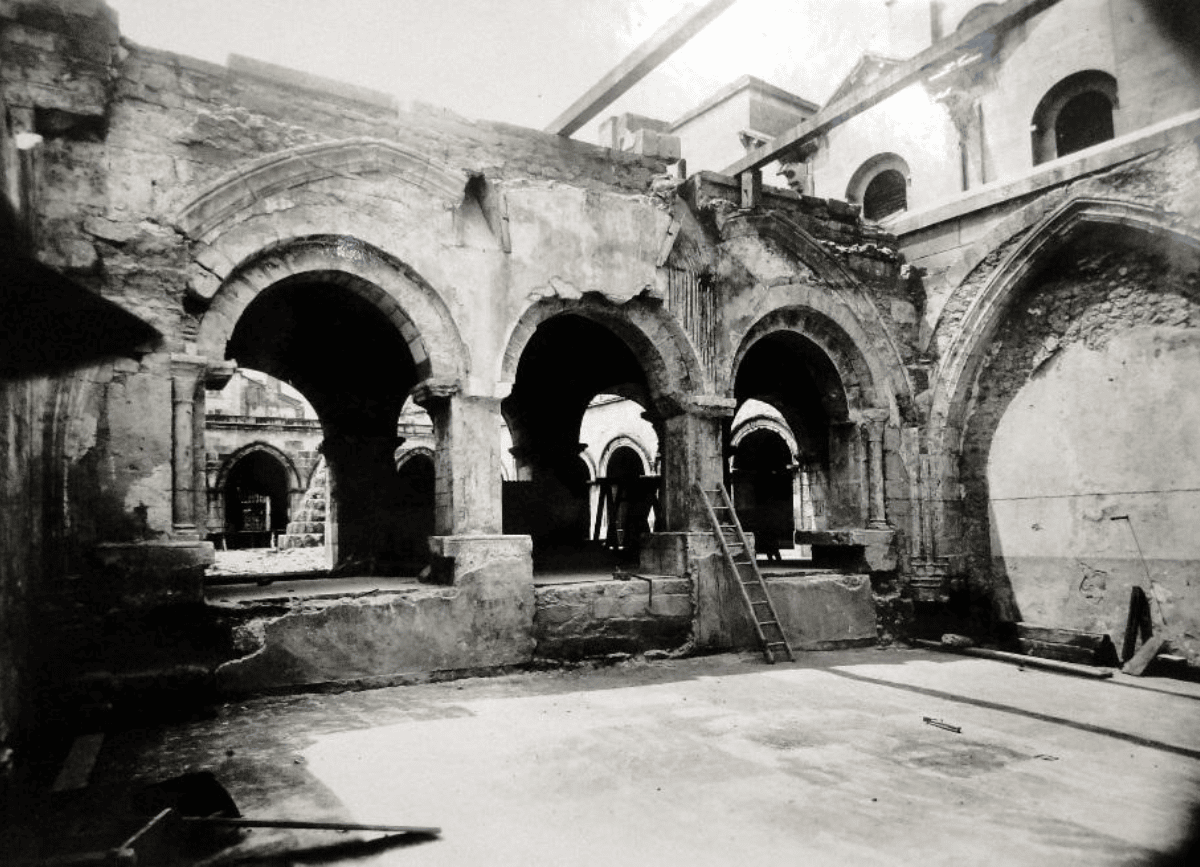
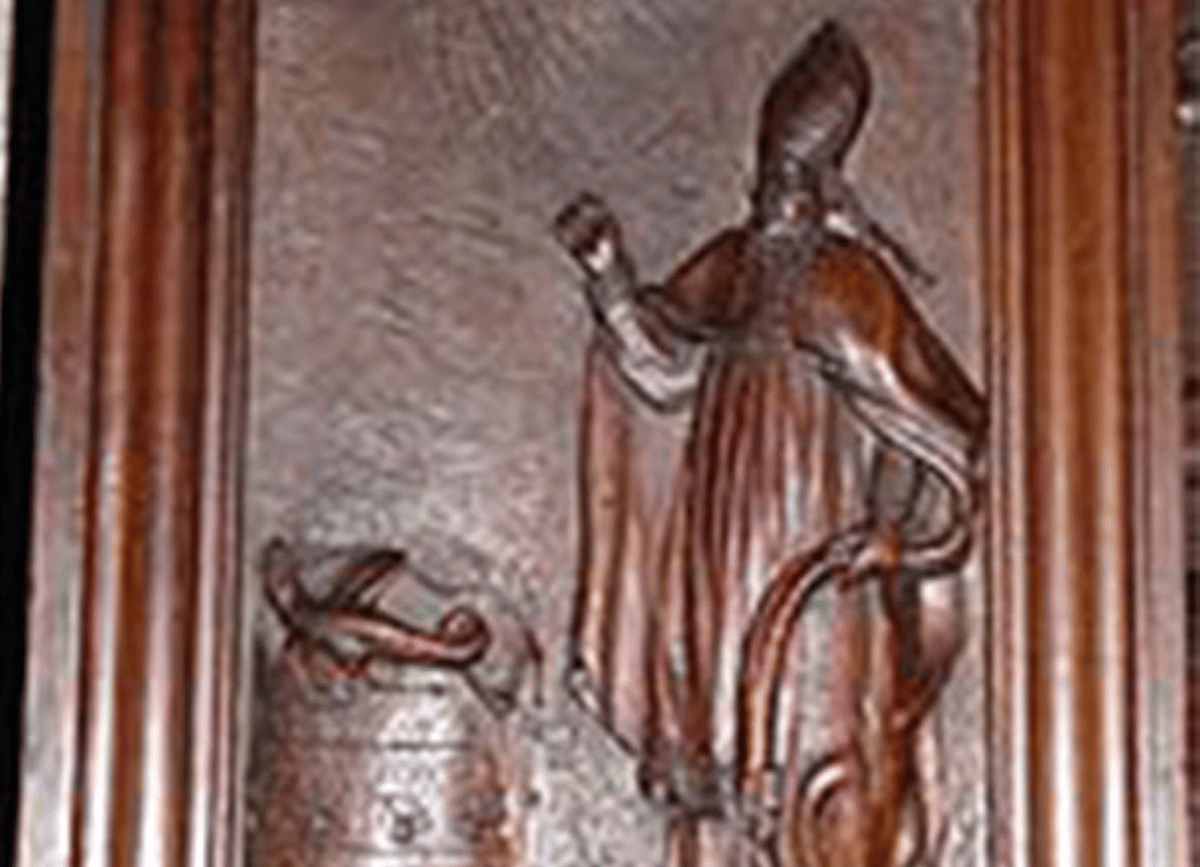
- In the 16th century, religious wars brought a sad end to this period of splendour. Protestants from Bergerac laid siege to Périgueux in 1575 and unfortunately the building was not spared, plus the relics of Saint-Front, the city’s true Catholic treasure, were pillaged. When Périgueux was liberated in 1581, the building was badly damaged and Saint-Front’s was left untouched and in a state of disrepair for decades.
- An 18th-century bishop, Macheco de Prémeaux, left his mark on the history of this monument, giving it a rather new look. To protect the domes from water damage, he had them roofed over for protection.
- Finally in 1852 the architect Paul Abadie, undertook major restoration work to the cathedral to save it from ruin. He brought it back to life, stone by stone, a colossal project lasting some fifty years. Abadie managed to retain the original plan and volumes of the cathedral as well as redesigning certain aspects to harmonise the architecture. He used the same architectural model for Saint-Front as he later used for the Sacré Coeur church in Paris.
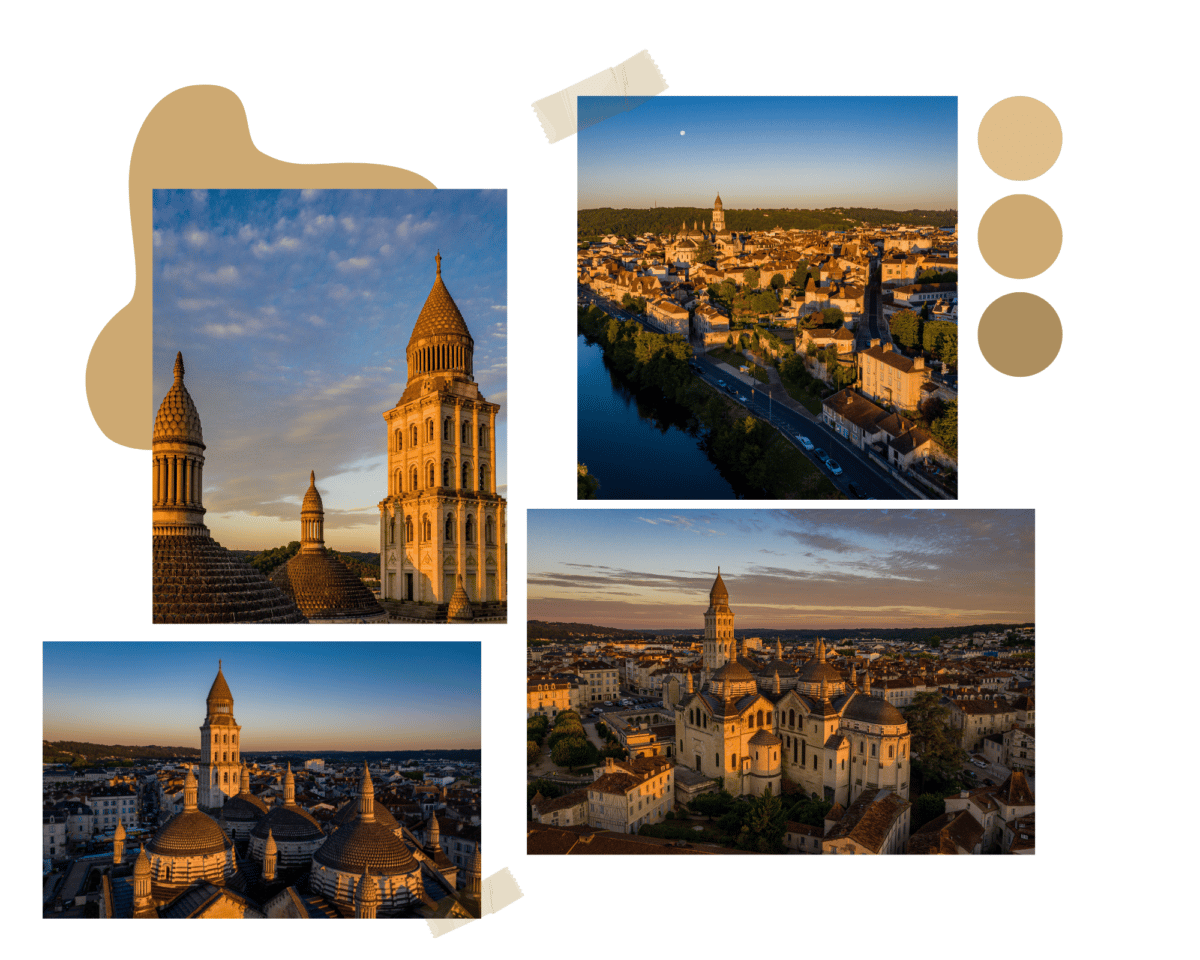
EAGER TO LEARN MORE? 🤓 To find out all about Saint-Front Cathedral and its history, you can take a guided tour of the interior or you can visit the exterior of the cathedral from the rooftop and get up close to the domes and carvings. Either way, in the company of our expert guides, you’ll be able to get to know the cathedral from a whole new angle !
Inside
Let’s take a look inside
St Front is not a cathedral festooned with gilded frames, frescoes and mosaics; part of its charm is its sombre quality. Nevertheless, there are some real gems to be found here: the magnificent central chandelier, which hung in the church of Notre-Dame-de-Paris in January 1853 at the wedding ceremony of Napoleon III and Eugénie de Montijo.
Equally fascinating are :
- The monumental altarpiece of the Jesuit College, intricately carved in wood
- The main organ Incredible stained-glass windows
- Furniture, tombs and statues spanning several centuries



